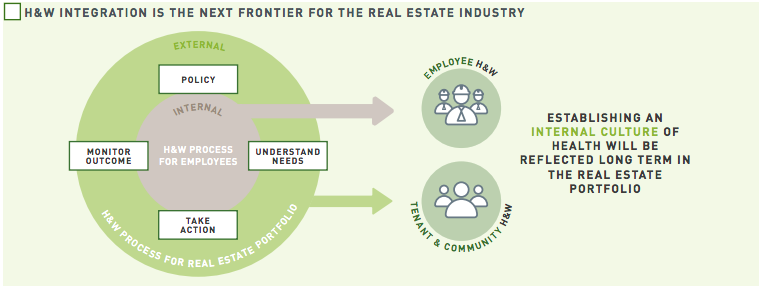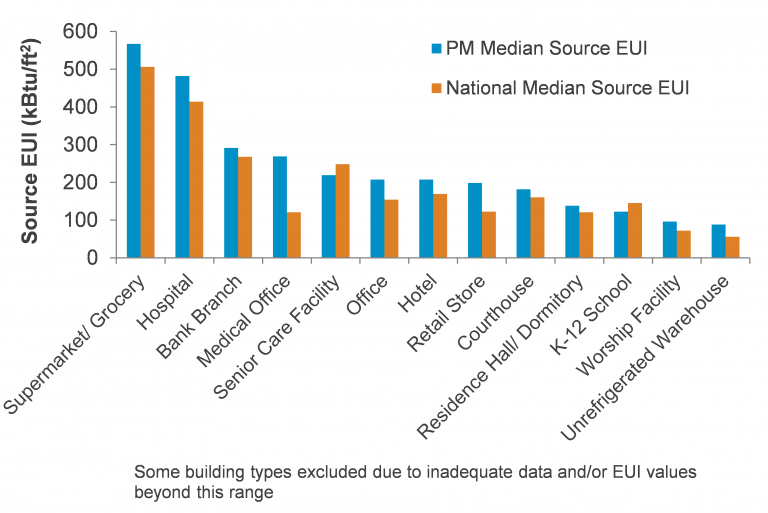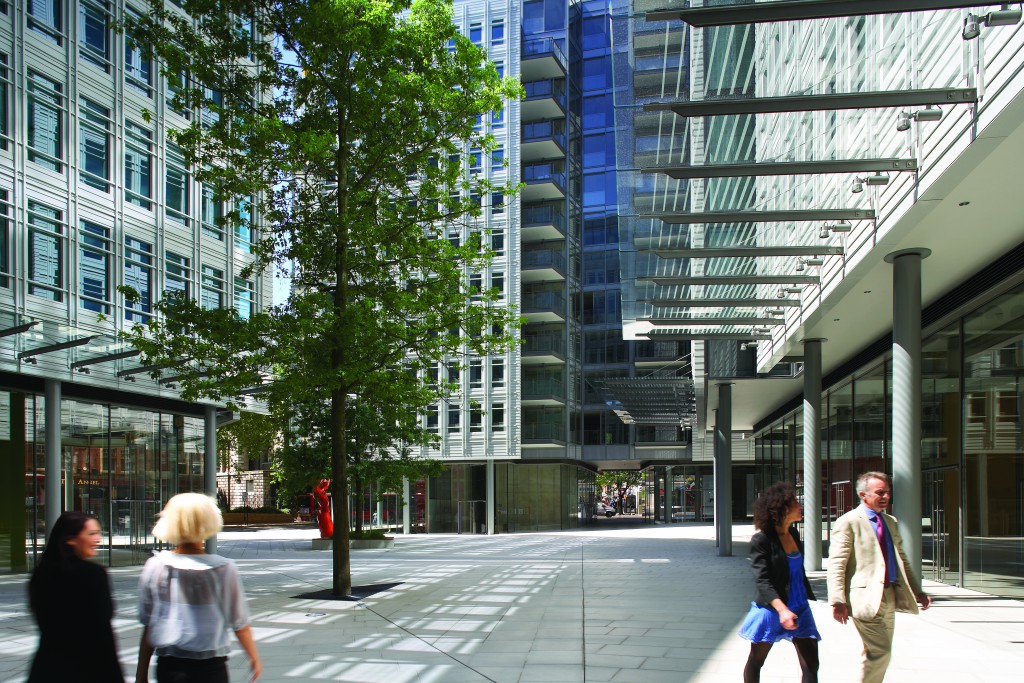
Health and well-being continues to be source of growth and opportunity for the global property industry. Over the past year, we have seen companies expand and deepen their commitment to health promotion for both their own employees and as a business strategy to attract and retain high-value tenants.
Now in its third and final year, the GRESB Health & Well-being Module has benefitted from robust participation and revealed new insights regarding health & well-being promotion at the real estate portfolio scale. The Module provides investors, property companies, and fund managers with a practical tool for systematic assessment, objective scoring, and peer benchmarking for health & well-being promotion. During the pilot year, 174 real estate entities participated in the GRESB Health & Well-being Module. In 2017, participation grew to 252 real estate entities, representing over 32,000 individual real estate assets. This level of participation revealed that property companies and funds are experimenting with new strategies to create competitive advantage and value as health & well-being continue to grow as areas of opportunity for the real estate industry.
After two years as a voluntary Module, the 2018 GRESB Health and Well-being Module will pave the way for integration of the Module into the 2019 GRESB Real Estate Assessment. A few changes to the structure and content of GRESB health indicators this year will prepare for full integration in 2019.
Streamlined and Simplified
The 2018 GRESB Health and Well-being Module consists of 8 indicators rather than 10 as in previous years. Additionally, we are piloting a slightly new question structure that allows for the explicit linkage between needs assessment, goal setting, action and monitoring.
Introduce “Risk Reduction” – “Value Creation” Spectrum
Real estate companies and funds are able to take action to both reduce risk and create value associated with health and well-being considerations. An example of this is the difference between traditional health and safety as compared to holistic health and well-being promotion. Efforts focused on building safety are driven by a desire to reduce the risk of harm whereas health promotion is focused on creating a superior environment that improves human experience and supports healthy behaviors. It’s important for both property companies and investors to identify and understand the difference between efforts to reduce risk and those to create value in order to make strategic decisions regarding the management of investments.
The GRESB Health and Well-being Module has always distinguished itself as focused on specifically health and well-being promotion, separate from traditional health and safety issues that have long been addressed in the GRESB Real Estate Assessment. However, indicators in the GRESB Real Estate Assessment traditionally commingled health, safety and well-being, making it difficult to combine insights from the GRESB Real Estate Assessment with the GRESB Health and Well-being Module. This year, we’ve created a distinction between safety, health and well-being within the GRESB Real Estate Assessment. “Safety” refers to traditional building and occupational safety hazards such as fire safety, construction safety, etc. “Health and well-being” refers to a holistic consideration of human experience and health promotion such as satisfaction, comfort, physical activity promotion and mental well-being.
Opportunities for Investors and Participants
There are immediate opportunities for action by both institutional investors and participants.
Investors: Experience with the H&W Module shows that there is significant variation in the adoption of health promotion as an internal and external business strategy. Leading companies and funds are using health and well-being to attract and retain high-value tenants. Other companies may not see the relevance to their business, or they may be missing out. It is timely for investors to know where their investments stand on this issue. Are they creating value? Effectively managing risks? Or, perhaps falling behind their peers? Investors should look at H&W Module scores for their investments and ask questions.
Companies and Funds: Data from the H&W Module indicates that health promotion action often starts internally. This suggests that companies and funds new to this issue should start by seeing how their internal health promotion practices compare to their peers. Once internal practices are in place, it’s time to consider how health and well-being can be used to create business value by enhancing asset value, attracting desirable tenants, and improving retention rates. Market leaders are doing all of these things, and peers that are not may be leaving value on the table.
Both investors and property companies can start today by reviewing the new H&W Module Reference Guide and preparing to share their work or ask good questions.
History
In 2016, GRESB worked with the Green Health Partnership, a research and development initiative between the U.S. Green Building Council and the University of Virginia School of Medicine funded by the Robert Wood Johnson Foundation, and a diverse set of industry experts and stakeholders to develop the GRESB Health & Well-being Module.







